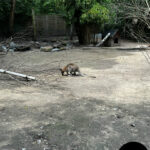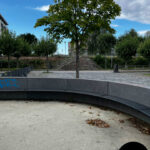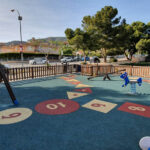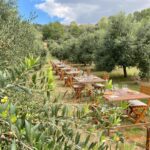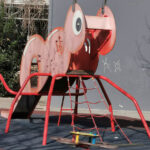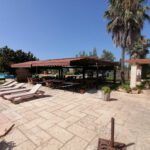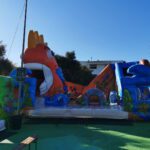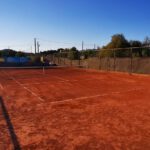
Easter, or Semana Santa as it is known in Spanish, is one of the most important Christian holidays and is celebrated with tremendous zeal and devotion in Mallorca. The island is well-known for its traditional celebrations and activities, which have been held for generations and continue to attract visitors from all over the world.
The processions held during Holy Week, or Semana Santa, adhere to a precise set of traditions and are organized each year by historical brotherhoods. Maundy Thursday, Good Friday, Easter Saturday, and Easter Sunday are the most important days of Holy Week. Following that, the Easter celebrations on the island take on a more family-oriented tone, with day outings and outdoor picnics.
The Origins of Semana Santa
Mallorca’s Palm Sunday celebrations begin on the Friday before Palm Sunday, when villagers assemble in the church square to wave palm fronds and sing hymns. This is followed by a parade of penitents carrying big wooden crosses and wearing hooded robes, expressing their grief over Jesus’ crucifixion. The procession is led by brass bands playing solemn music, as well as women dressed in black who walk behind the penitents carrying candles. Reenacting Christ’s sufferings in Easter processions is a significant tradition in many parts of Spain, including Palma de Mallorca.
Thursday
Palm Sunday marks the start of the Holy Week of Semana Santa in Palma de Mallorca, with a Mass attended by people carrying palm and olive branches. The Procession of Christ of the Blood, Mallorca’s most prominent Easter procession, begins late in the afternoon on Maundy Thursday. During Semana Santa, nine processions are held, with participation from roughly 30 Balearic Islands brotherhoods and a rising number of sisterhoods. The earliest visitors arrive as early as midday to get the finest viewing places for the processions, since this emotive spectacle draws hundreds of thousands of onlookers from all over the world every Easter.
The first costumed riders and masked penitents come in the late afternoon, wearing peaked hoods to maintain their secrecy. The renowned picture of Jesus, surrounded by drums, flowers, candles, and men in chains, stirs the souls of people on the street. After midnight, at around 1:00 a.m., the Procession of Holy Christ of the Blood returns through the main gates of Palma’s cathedral, accompanied by the bishop and innumerable members of the congregation. The procession concludes with ardent prayers in honor of Jesus Christ.
Good Friday
With the exception of holiday hotspots, most businesses on the larger of the Balearic Islands remain closed on Good Friday. On Mallorca, Thursday, Good Friday, and Easter Monday are all public holidays, therefore no one in Palma has to work. On Good Friday, many additional Mallorcan Holy Week festivities take place, accompanied by a large number of enthusiastic tourists and participants. Palma’s ceremonial Holy Burial Procession, which begins at 7.30 p.m. on Good Friday in Sant Francesc, is one example of this. Every year on this particular day, hundreds of people rush to Pollença just as darkness falls to see the evocative torchlight re-enactment of the Descent from the Cross, following the drums and lanterns down the steps of Mount Calvario to the parish church. The statue of Christ is draped in black lace linen during the procession. The congregation holds a joyous Midnight Mass upon their arrival at the church. Sineu also has its own Holy Burial ceremony, which begins about 11 p.m. with the Sant Entierro procession. Passion plays, processions, and dramatic religious performances for Christ of the Blood are held on Good Friday.
Events on the weekend
Easter ceremonies continue on Easter Saturday and Easter Sunday following the martyrium on Maundy Thursday and the Holy Burial on Good Friday. Empanadas – pastries filled with meat or seafood – are especially popular on Easter Saturday. The sweet variety, known as robiols, is equally wonderful when filled with jam or cottage cheese. Traditionally, the remaining pastry is used to produce crespells, a type of biscuit. Chocolate eggs are a famous Easter treat on the island of Mallorca, where they are used to make the traditional Easter cake, Mona de Pascua. These cakes are given to children by their godparents, following an old Mallorcan tradition. The Saturday of Easter weekend is a regular business day on Mallorca, making it ideal for shopping and sightseeing! The most prominent Easter Masses are held on Easter Sunday, such as the 8:00 a.m. Mass in Llucmajor, close outside Palma. Following that, a procession of men transports the statue of Jesus to the Church of the Meeting in the main square, where it is met by women transporting the figure of the Virgin Mary from the parish church. On Easter Sunday, there is also a very popular market. The Processions of the Brotherhoods in Manacor are another stunning Easter extravaganza on Mallorca.
Therefore, the Procession of the Resurrection, which takes place on Easter Sunday, is another important event during the Easter celebrations in Mallorca. This procession is a joyful celebration of Jesus’ resurrection, with brilliantly colored banners, music, and flowers. Local children dress up in traditional costumes and march in the procession while singing songs and carrying flowers.
After Easter Days
Mallorca’s Easter celebrations are not only religious in nature, but also have a strong cultural component. The island has a rich history and culture, and the celebrations allow inhabitants to honor their ancestry while also keeping their habits alive. The gorgeous scenery and old structures on the island also create a stunning background for the celebrations, making them even more remarkable. Palma’s stores are closed on Easter Monday. On Divine Mercy Sunday, the Sunday following Easter, a happy family fête is celebrated in Palma’s castle. Many people regard Easter as a time for picnics with extended families or dining out at one of the many restaurants available in the island’s towns and villages. People also enjoy getting out into the countryside or visiting relatives once the processions have finished. Many people take a plunge in the sea to cool down after a lovely stroll or bike ride along the Va Verde or up to the Santuari de Lluc monastery, however the water in April is unlikely to be warmer than 15 or 16 degrees. A delightful sunbathing in the 24-degree spring air, on the other hand, is the ideal way to warm up again. The temperature of the water and the air is uniform across the island. There are numerous gorgeous beaches to select from, including those in Palma’s harbor, Colonia de Sant Jordi, and Cala Millor.
In closing, the Easter celebrations in Mallorca are a must-see event for everyone interested in history, culture, or religion. Whether you are a devout Christian or just a curious traveler, the island’s passionate and ardent celebrations will make an indelible impact. So, if you’re planning a trip to Mallorca in the spring, make sure to include the Easter celebrations in your itinerary so you may witness this incredible cultural and religious event for yourself.


